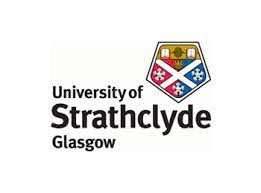University of Strathclyde: Strathclyders included on annual Highly Cited researchers list
Two Strathclyde academics have been included in a prestigious list of ‘highly cited’ researchers.
Professor of Physical Activity and Public Health Science at the School of Psychological Sciences and Health, John Reilly and Harald Haas, Professor of Mobile Communications and Director of the LiFI Research and Development Centre at Strathclyde, are in the annual Highly Cited Researchers list from Clarivate Analytics.
Significant influence
It identifies authors of multiple papers ranking in the top one per cent by citations for their fields and publication year, demonstrating significant influence among their peers.
Professors Reilly and Haas join 6,600 researchers from more than 70 countries and regions who have demonstrated significant influence in their chosen field or fields through the during the last decade.
Professor Reilly is included in the ‘Cross-Field’ Category and his research work includes interventions for the prevention of child and adolescent obesity worldwide and the consequences of obesity and low physical activity in children and adolescents.
Ground breaking
Professor Haas, who is included in the ‘Computer Science’ category, is known for his ground-breaking research into light-based communications technology, LiFi, which makes use of visible light waves instead of radio waves to deliver data.
By recognising researchers with high citation impact—rankings based on millions of citations—the list celebrates both the reach and the influence of international research in 21 fields of study.
The United Kingdom has 492 researchers on the list, following the United States and Mainland China, which have 2,622 and 935 respectively.
For the first time, researchers from Bangladesh, Kuwait, Mauritius, Morocco and the Republic of Georgia are included on the list this year.
This year’s list includes 24 Nobel laureates, including five announced this year and 77 Citation Laureates – individuals recognised by Clarivate, through citation analysis, as ‘of Nobel class’ and potential Nobel Prize recipients.
Accelerating innovation
Joel Haspel, SVP Strategy, Science at Clarivate said: “This year’s data reflect a decade’s worth of research publications from the global scientific community. As well as documenting the ‘Eureka!’ moments, our data tell the story of late nights spent filling in grant applications, poring over results in the lab, the unsung work of peer reviewing contemporaries’ manuscripts, and the many small failures that ultimately lead to bigger successes and accelerating innovation.
“Our analysts have found continued growth in the highly cited, high-impact research from Mainland China, but the United States remains the scientific powerhouse of the world, and U.S. institutions represent five of the top ten, with Harvard University at the very top of the leader board.”

